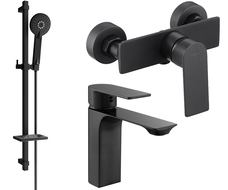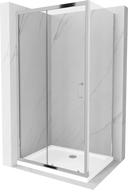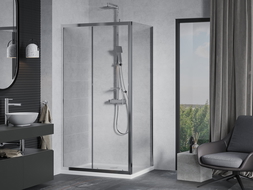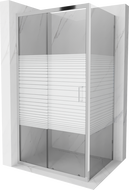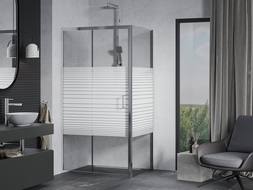
Nowadays, more and more articles are being written about saving water in the bathroom (and not only there). This is extremely important as water consumption worldwide is reaching record levels. In caring for the environment, many people are wondering how to reduce water usage. One way is using a shower in the bathroom. It's about using it in an eco-friendly way, caring for the environment!
What will you learn from this article?
- Why it's worth saving water when someone takes a shower (and not only).
- How to do it without much effort, but with benefits for your wallet and the environment.
- What types of accessories and equipment help save water.
Eco-friendly bathroom at home
Reducing water consumption seems difficult at first, but eco-friendly behaviours are natural and can be easily learned. To reduce water flow in the apartment or house, it's worth replacing bathtubs with shower cabins. This way, you can save many litres of water used to fill a bathtub, where you only spend a few minutes. How to achieve low water consumption?
- Having a shower, the evening care routine is done standing. This way, a person automatically informs the brain that they need to hurry.
- Sitting or lying in the bathtub can give a sense of relaxation and a need for a longer stay. This way, litres of water are wasted without purpose. When designing a bathroom, keep this in mind.
- If you want to save hot water, you can additionally opt for thermostatic taps that allow you to set the water supply temperature. Nevertheless, lukewarm water is enough for a daily shower, which also means energy savings! Lukewarm water is much healthier than hot water, which can negatively affect your skin condition.
Reducing water consumption – useful tools
To start saving water, you don't need many specialised means or tools. It's worth using basic accessories that are already available in your home. Save water by having access to what you already have. This way, you also protect the environment. Check if your washbasin taps are not leaking. This is one of the main sources where water escapes. If they turn out to be too damaged, and despite replacing seals, the problem persists, replace them with new ones.
A good idea is also to use shower sets and other bathroom equipment designed to limit water consumption. Shower heads can aerate the water stream to the extent that it is effective during bathing, yet does not use too much water. When renovating the bathroom, it's worth opting for point shower sets, which also help minimise the amount of water used in our bathroom.
If the bathroom lacks natural light, you must always turn on the lights. This wastes electricity. Choose glass doors with frosted glass. They don't let images through, but they do let light through. This makes the bathroom brighter immediately. You can also install glass doors in the shower. Use light tiles in addition. This way, you'll gain more reflected light, and the whole room will seem brighter. An eco-friendly bathroom does not mean many sacrifices. Use natural materials and create your ideal space.
Is it worth using aerators and flow restrictors?
Aerators are small devices installed on tap ends that mix water with air, reducing its usage by up to 50%. Thanks to them, the stream remains equally effective, yet we use less drinking water. Flow restrictors for showers serve a similar role – they regulate the amount of hot or cold water flowing through the shower head, significantly reducing daily consumption. These affordable solutions are easy to install and can lead to real savings on water bills.
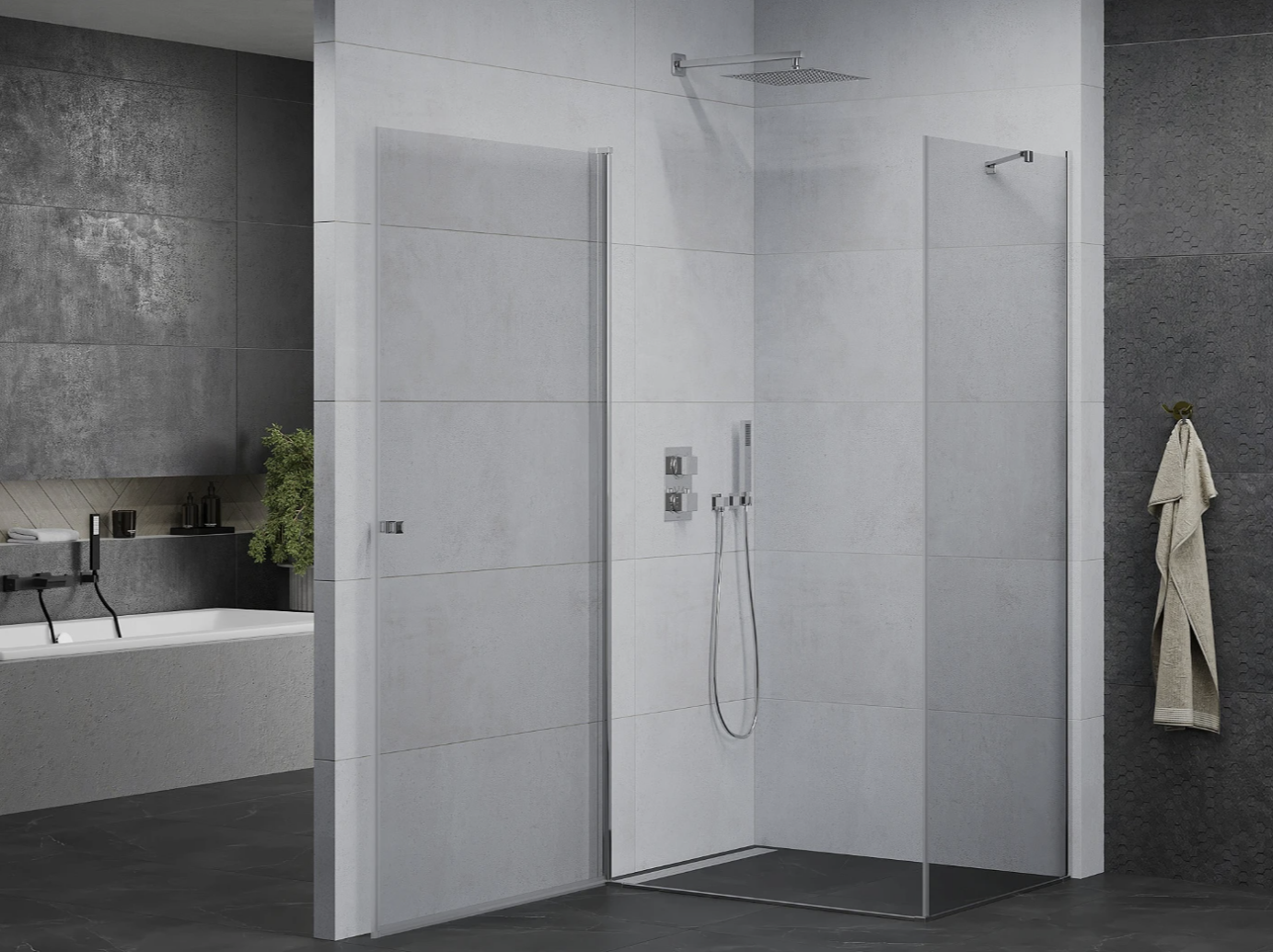
Automatic water-saving systems – how do they work?
Modern technologies allow a significant reduction in water consumption through automation. Motion sensors installed on taps only activate the stream when hands are nearby, eliminating water waste, for example, during teeth brushing. Another solution is timed water switches, limiting the operation time of a shower or taps, which promotes greater user awareness. Automatic systems can be an excellent choice in homes, offices, or public-use places, ensuring lower water consumption.
How to plan a bathroom renovation with water saving in mind?
When planning a bathroom renovation, it's worth considering solutions that allow for efficient water management. You should choose:
- shower cabins instead of bathtubs,
- shower heads aerating water and
- thermostatic taps.
It's also worth investing in eco-friendly devices marked with water efficiency class A+. Additionally, it's good to use light tiles and glass doors, which increase the amount of light in the bathroom, reducing the need for electric lighting. Planning a renovation with ecology in mind is both water and energy saving.
The most common mistakes in saving water – what to avoid?
Many people, despite good intentions, make mistakes that thwart their efforts to save water. A common problem is the lack of regular inspection of installation tightness – leaking taps or faulty flushes can waste even hundreds of litres of water a month. It's also worth avoiding using low-quality devices that do not meet ecological standards, increasing the risk of situations where water leakages occur.
How to educate household members on water saving?
Saving water at home requires the involvement of all household members. The key to success is education and the introduction of simple habits, such as turning off the water when brushing teeth or using a cup to rinse the mouth. It's also worth discussing the benefits of saving water – both ecological and financial. For children, educational games teaching how much water you can save by following a few basic rules can be a great idea. For adults, apps monitoring water usage in the household might be helpful.
Not just a shower! User comfort and an eco-friendly bathroom
The comfort you feel during daily hygiene and care is also important. Therefore, you can use only a few tips you find best. For example, you can abandon a strong for a smaller stream of water that you do not need. This way, you will be able to better control water flow and rinse your hair more thoroughly in a short time. This way, you can save water in the shower in an eco-friendly bathroom twice.
When brushing teeth, it's not recommended to run water from the washbasin tap all the time. Use a water cup, which is completely sufficient to rinse your mouth thoroughly. You can choose one that meets your aesthetic requirements in a special way or opt for one that you no longer use in the kitchen. You will then use significantly less water than if you rinsed your mouth under a running stream.
Water saving also means lower bills for its consumption. If you care about saving money, a modern bathroom with a shower and eco-friendly solutions, thanks to which you save water and electricity, is the perfect solution for you. And if you want to know more about eco-friendly solutions at home, check our blog. You can read there about, among other things, how to reduce the amount of water in the toilet flush.
Summary
Low water pressure in the shower is a common problem affecting daily bathroom use comfort. The cause may be both the plumbing installation and specific fixtures. Fortunately, there are several effective ways to improve water flow and increase shower comfort.
Weak pressure in the shower head may be due to lime deposits, leaking connections, or too small pipe cross-sections. It's also worth checking the water flow class in the tap, as lower-class models may limit the amount of water reaching the shower.
If the problem is a clogged shower head, cleaning it or replacing it with a higher-flow model is enough. A water restrictor to the shower might also be helpful, which can be removed in some cases to improve stream strength. When low water pressure in the shower is caused by the plumbing installation, installing a pressure-boosting pump can be a good solution.
In multi-story buildings, the problem may result from level differences – the height of the water supply to the shower affects its pressure. The higher the point of use, the lower the pressure. In this case, it's best to consult a plumber and consider modernising the installation.



















